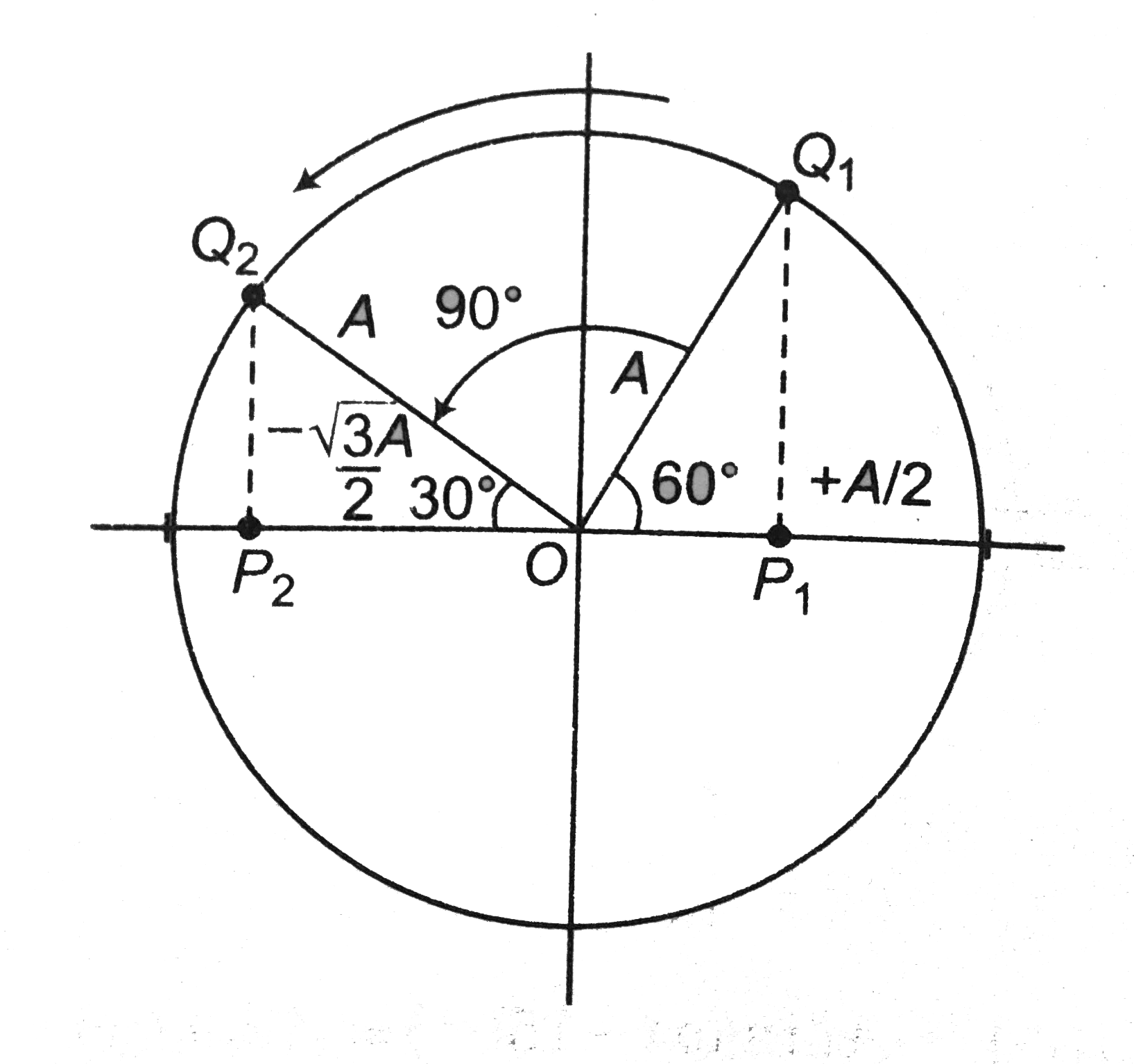In terms of time period of oscillations T, find the shortest time in moving a particle from +A2 to −√32.
The correct Answer is:D
As shown in figure, as the SHM particle P moves from P1 to P2, its corresponding particle Q on reference circle rotates from Q1 to Q2 an angle of 90∘. From the above table , we can see that, in rotating an angle of 90∘ the time taken is T4.
t=T4

Topper's Solved these Questions
- SIMPLE HARMONIC MOTIONBook:DC PANDEYChapter:SIMPLE HARMONIC MOTIONExercise:Example Type 4
Explore 1 Video
- SIMPLE HARMONIC MOTIONBook:DC PANDEYChapter:SIMPLE HARMONIC MOTIONExercise:Example Type 5
Explore 7 Videos
- SIMPLE HARMONIC MOTIONBook:DC PANDEYChapter:SIMPLE HARMONIC MOTIONExercise:Example Type 2
Explore 1 Video
- SEMICONDUCTORS AND ELECTRONIC DEVICESBook:DC PANDEYChapter:SEMICONDUCTORS AND ELECTRONIC DEVICESExercise:More than One Option is Correct
Explore 3 Videos
- SOLVD PAPERS 2017 NEET, AIIMS & JIPMERBook:DC PANDEYChapter:SOLVD PAPERS 2017 NEET, AIIMS & JIPMERExercise:Solved paper 2018(JIPMER)
Explore 38 Videos
Similar Questions
Knowledge Check
Statement-I : In simple harmonic motion A is the amplitude of oscillation. If t1 be the time to reach the particle from mean position to A√2 and t2 the time to reach from A√2 to A . Then t1=r2√2
Statement-II: Equation of motion for the particle starting from mean position is given by x = ± A sinωt and of the particle starting from extreme position is given by x = ± A cosωtAIf both statement -I and Statement -II are true , and statement-II is the correct explanation of statement -IBIf both statemenrt-I and Statement-II are true but statement-II is not the correct explanation of statement -ICIf statement -I is true but statement -II is false.DIf statement -I is true but statement -II is trueThe time period of an oscillator is 8 sec. the phase difference from t=2 sec to l=4 sec will be :-
AπBπ2Cπ4D2πA particle executes simple harmonic oscillation with an amplitudes a. The period of oscillation is T. The minimum time taken by the particle to travel half of the amplitude from the equilibrium position is
AT8BT12CT2DT4.
A simple harmonic oscillation has an amplitude A and time period T. The time required to travel from x=A to x=A2 is
View SolutionA particle executes simple harmonic oscillation with an amplitude a. The period of oscillation is T. The minimum time taken by the particle to travel half of the amplitude from the equilibrium position is
View SolutionA particle executes simple harmonic oscillation with an amplitude a. The period of oscillation is T. The minimum time taken by the particle to travel half of the amplitude from the equilibrium position is
View SolutionAssertion : Time taken by a particle in SHM to move from x=A to x=√3A2 is same as the time taken by the particle to move from x=√3A2 to x=A2.
Reason : Corresponding angles rotated is the reference circle are same in the given time intervals.
View SolutionA particle executes simple harmonic oscilliation with an amplitude a. The period of oscillations is T. The minimum time taken by the particle to travel half to the amplitude from the equlibrium position is
View Solution


